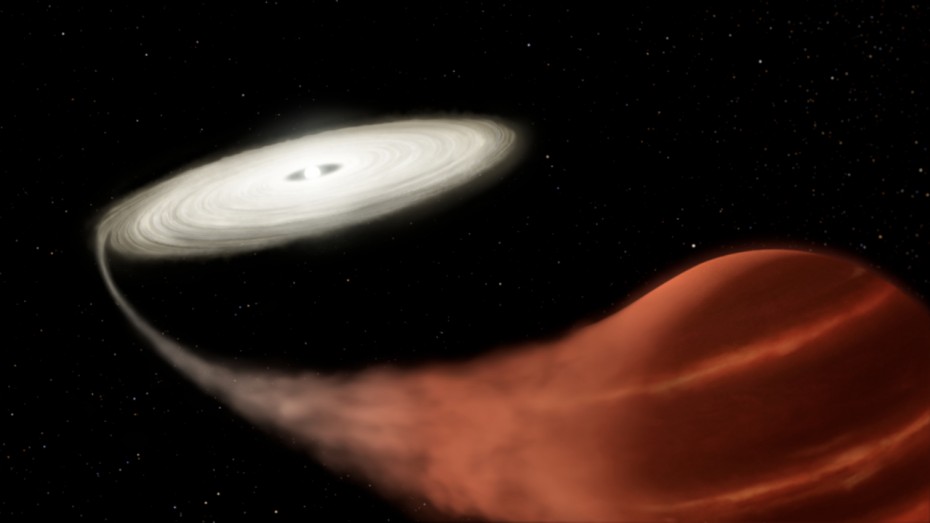
NASA’s Kepler Spacecraft Detects Vampire Star System (Photo Credit: NASA and L. Hustak (STScI))
New Delhi:
Kepler spacecraft, which belongs to the National Aeronautics and Space Administration (NASA), has recently detected a vampire star system in space and it’s an unusual super-outburst. It is to be noted that NASA's Kepler spacecraft was designed to find exoplanets by looking for stars that dim as a planet crosses the star's face. However, it sometimes spots other objects that brighten or dim, including a vampire star system. This unusual super-outburst hails from a previously unknown dwarf nova.
According to NASA, the star system in question consists of a white dwarf star with a brown dwarf companion about one-tenth as massive as the white dwarf. A white dwarf is the leftover core of an aging Sun-like star and contains about a Sun's worth of material in a globe the size of Earth. A brown dwarf is an object with a mass between 10 and 80 Jupiters that is too small to undergo nuclear fusion.
“The brown dwarf circles the white dwarf star every 83 minutes at a distance of only 250,000 miles (400,000 km) – about the distance from Earth to the Moon. They are so close that the white dwarf's strong gravity strips material from the brown dwarf, sucking its essence away like a vampire. The stripped material forms a disk as it spirals toward the white dwarf (known as an accretion disk),” NASA said.
NASA further said, “Kepler captured the entire event, observing a slow rise in brightness followed by rapid intensification. While the sudden brightening is predicted by theories, the cause of the slow start remains a mystery. Standard theories of accretion disk physics don't predict this phenomenon, which has subsequently been observed in two other dwarf nova super-outbursts.”
It was identified by a team led by Ryan Ridden-Harper of the Space Telescope Science Institute (STScI), Baltimore, Maryland, and the Australian National University, Canberra, Australia. "In a sense, we discovered this system accidentally. We weren't specifically looking for a super-outburst. We were looking for any sort of transient," said Ridden-Harper.
Ridden-Harper further said, "These dwarf nova systems have been studied for decades, so spotting something new is pretty tricky. We see accretion disks all over – from newly forming stars to supermassive black holes – so it's important to understand them."
Theories suggest that a super-outburst is triggered when the accretion disk reaches a tipping point. As it accumulates material, it grows in size until the outer edge experiences gravitational resonance with the orbiting brown dwarf. This might trigger a thermal instability, causing the disk to get superheated. Indeed, observations show that the disk's temperature rises from about 5,000–10,000° F (2,700–5,300° C) in its normal state to a high of 17,000–21,000° F (9,700–11,700° C) at the peak of the super-outburst.
Also Read: NASA's OSIRIS-REx Spacecraft Successfully Executes Closest Flyover Of Asteroid Bennu’s Sample Site
It is worth mentioning here that this type of dwarf nova system is relatively rare, with only about 100 known. An individual system may go for years or decades between outbursts, making it a challenge to catch one in the act.




